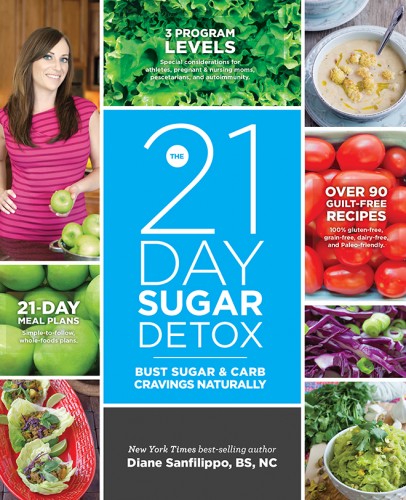By Sasha Moedt (The Cascade) – Email
Print Edition: February 5, 2014
I’m not one for fad diets. I tried Dr Oz’s smoothie cleanse, and it was awful. How can you subscribe to anything that doesn’t seem like common sense when it comes to what you eat?
I came across The 21 Day Sugar Detox while researching a diet that does make sense to me – the so-called Paleolithic (Paleo) diet, or “caveman” diet. While the terms for this diet are flawed (as any anthropologist will argue), the rationale behind it is logical. Avoid processed foods, and eat what a hunter-gatherer would eat. No refined sugar, no refined carbohydrates (bread, pasta), no flours — basically, anything that you couldn’t get from the natural world and prepare yourself, you shouldn’t eat. Your simplified menu would look like this: meat, fish, eggs (preferably organic), nuts and seeds, fruits and vegetables.
The author of The 21 Day Sugar Detox, Diane Sanfilippo, is also the bestselling author of Practical Paleo: A Customized Approach to Health and a Whole-Foods Lifestyle. Her follow-up book — Sugar Detox — can be seen as a gateway into the world of Paleo, a way to ease yourself into it.
Sugar Detox is sectioned into three parts: the science, the program, and the 90-plus recipes that make up the program. The most important thing I took away is essentially this: my body is always telling me things, and it’s important to listen. I usually just take an Advil for a stress headache, grab a coffee if I’m tired, and pop another pill if I can’t sleep. But by treating my symptoms with quick fixes, I’m muting my body’s voice, and it’s not really safe. Why do I always crash in the afternoon? Why do I always get headaches? Why am I always stressed out? Why can’t I sleep?
Sanfilippo says it’s all about food.
Pretend every time you eat, you are depositing nutrients into your body’s “bank account.” Because the process of digestion takes micronutrients, you need to take out a withdrawal to leave a deposit. By eating nutrient-dense food, you are making a valuable deposit. When you eat nutrient-poor foods, you are asking for a withdrawal without making a deposit because the deposit doesn’t make up for the nutrients taken away by the withdrawal. Your body gets hungrier — begging for food with more nutrients — so you eat more low-nutrient carbs. Your body only gets more tired and hungry. The vicious cycle: eat bad carbs; dopamine hit (rewarding neurotransmitter response to eating sugary foods); craving more; low nutrient stores; eat bad carbs. The cycle goes on.
The program itself is very straightforward. You pick what level you are according to your lifestyle. If you’ve never tried anything like this, and you eat pasta every day, level one is for you. There are three levels in total, advancing in difficulty. Each level has a “yes” food list and a “no” food list. It’s very basic. Sanfilippo also has meal plans that you can follow, with modifications for pescetarians, if you are extremely active, etc.
There is an information sheet on what to expect day-to-day that I found pretty interesting. Apparently the hardest days are from day four to 11, when you have withdrawal-like symptoms.
The recipes themselves are surprisingly affordable for students. Often cookbooks that cut out all the cheap processed stuff we thrive on replace it with expensive specialty health-food-store foods. But if you’re okay with buying lots of proteins (meats, but also with an emphasis on eggs), vegetables, almonds, and spices, it’s not bad at all. A couple of gold stars to this book for bringing me jalapeno bacon burgers, meatza (yes … the crust is meat), and rosemary salmon with cabbage (the sautéed cabbage is so good!)
The 21 Day Sugar Detox is an interesting read. The nutritional explanations are clear and comprehensive (even for an arts major!). The detox program itself isn’t ridiculous; it’s doable. If you’re interested in making a change health-wise, or even if you’re interested in thinking about making a change, this book is very non-threatening. For food for thought, give this book a read.



